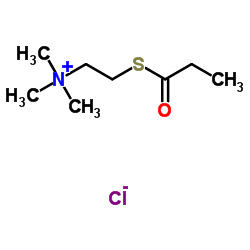Bivalve esterases as biomarker: identification and characterization in European cockles (Cerastoderma edule).
Jeamylle Nilin, Marta Monteiro, Ines Domingues, Susana Loureiro, Letícia V Costa-Lotufo, Amadeu M V M Soares
Index: Bull. Environ. Contam. Toxicol. 88(5) , 707-11, (2012)
Full Text: HTML
Abstract
This study characterized esterase activity in Cerastoderma edule tissues using different substrates and specific inhibitors and identified the tissue distribution of esterases in this species. Synthetic thiocholines and thioacetate esters and specific inhibitors (eserine, BW284C51 and iso-OMPA) were used to identify and quantify cholines and carboxyl esterases. The results demonstrated the presence of a non-specific propionyl thiocholine (PrSCh)-cleaving cholinesterase (ChE) and a large amount of carboxylesterases (CaE). For further studies using C. edule esterases as biomarkers, our results suggest that the adductor muscle, with PrSCh (5 mM) as substrate should be used to analyze ChE, and for CaE analyses, phenyl thioacetate should be used in digestive gland extracts (PSA, 5 mM).
Related Compounds
| Structure | Name/CAS No. | Molecular Formula | Articles |
|---|---|---|---|
 |
propionylthiocholine iodide
CAS:1866-73-5 |
C8H18INOS |
|
Evaluation of mechanisms of azinphos-methyl resistance in th...
2004-10-01 [Arch. Insect Biochem. Physiol. 57(2) , 92-100, (2004)] |
|
Differentiation of esterases reacting with organophosphorus ...
1993-06-01 [Chem. Biol. Interact. 87(1-3) , 77-83, (1993)] |
|
Assay using succinyldithiocholine as substrate: the method o...
2003-03-01 [Clin. Chem. Lab Med. 41(3) , 317-22, (2003)] |
|
Characterization of a pseudocholinesterase purified from sur...
1988-09-01 [J. Exp. Zool. 247(3) , 198-208, (1988)] |
|
Purification and characterization of an acetylcholinesterase...
2007-09-01 [Comp. Biochem. Physiol. C. Toxicol. Pharmacol. 146(3) , 314-24, (2007)] |